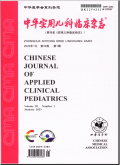寄生虫病儿童外周血嗜酸性粒细胞增多的临床特点
Clinical features of eosinophilia in peripheral blood in children with parasitic diseases
摘要目的:总结寄生虫病儿童的外周血嗜酸性粒细胞(EOS)增多的特点。方法:收集2002年6月至2020年6月在深圳市儿童医院住院确诊为寄生虫病患儿的临床资料,分析寄生虫感染后外周血EOS的变化特点。结果:1.共确诊儿童寄生虫病37例。其中男25例,女12例;年龄10个月~12岁7个月,中位年龄5岁3个月。2.在37例患儿中外周血EOS绝对计数增多32例(86.49%),范围为(0.55~43.80)×10 9/L,其中轻度增多6例(18.75%)、中度增多8例(25.00%)、重度增多18例(56.25%)。3.不同虫种外周血EOS增多情况:肺吸虫感染16例(50.00%),肝吸虫感染4例(12.50%),混合感染3例(9.38%),血吸虫、裂头蚴、包虫、囊虫感染各2例(均占6.25%),蛔虫感染1例(3.13%)。不同种类寄生虫感染外周血EOS增高程度不同,差异有统计学意义( Fisher′ s值为17.97, P=0.01)。4.不同系统受累外周血EOS增多情况:呼吸系统18例(48.65%)、消化系统13例(35.14%)、皮肤7例(18.92%)、中枢神经系统5例(13.51%)、循环系统3例(8.11%)、其他2例(5.41%)。5.无EOS增多5例寄生虫感染分别为人芽囊原虫2例,裂头蚴和囊虫混合感染、囊虫、旋毛虫感染各1例。不同系统受累后外周血EOS增多情况虽然不同,但差异无统计学意义( Fisher′ s值为7.37, P=0.06)。 结论:外周血EOS增多是儿童寄生虫病的常见现象,增高的严重程度与感染寄生虫种类相关,与系统受累的部位无相关性。
更多相关知识
abstractsObjective:To summarize the characteristics of eosinophilia in peripheral blood in children with parasitic diseases.Methods:All clinical data of children with parasitic diseases who were diagnosed in Shenzhen Children′s Hospital from June 2002 to June 2020 were collected to analyze the characteristics of eosinophil changes in peripheral blood after parasitic infection.Results:(1)A total of 37 cases of parasitic diseases were diagnosed in children, with 25 males and 12 females, aged from 10 months to 12 years and 7 months, and the median age was 5 years and 3 months.(2)Among 37 cases, the absolute number of eosinophils in peripheral blood was increased in 32 cases (86.49%), with a range of (0.55-43.80)×10 9/L: 6 cases (18.75%) were slightly increased, 8 cases (25.00%) were moderately increased, and 18 cases (56.25%) were severely increased.(3)As for eosinophilia in peripheral blood of different insect species, there were 16 cases (50.00%) of fasciola infection, 4 cases (12.50%) of fasciola infection, 3 cases (9.38%) of mixed infection, 2 cases (6.25%) of schistosomiasis, plerocercoid, hydatid and cysticercosis infection, and 1 case (3.13%) of ascaris infection.The degrees of the increase of eosinophils in peripheral blood infected by different species of parasites were different ( Fisher′ s value 17.97, P=0.01), with statistically significant differences.(4)Eosinophilia in peripheral blood was involved in different systems, with respiratory system in 18 cases (48.65%), digestive system in 13 cases (35.14%), skin in 7 cases (18.92%), central nervous system in 5 cases(13.51%), circulatory system in 3 cases (8.11%), and others in 2 cases (5.41%). (5)There were 5 cases of parasitic infection without eosinophilia, including 2 cases of Blastocystis hominis, and 1 case of mixed infection with plerocercoid and cysticercosis, 1 case of cysticercosis and 1 case of trichinella spiralis.The increase of eosinophils in peri-pheral blood after different systems was different, without statistically significant differences ( Fisher′ s value 7.37, P=0.06). Conclusions:Eosinophil in peripheral blood is a common phenomenon of parasitic infection in children.The increased severity is related to parasite species, instead of the site of systemic involvement.
More相关知识
- 浏览0
- 被引3
- 下载0


相似文献
- 中文期刊
- 外文期刊
- 学位论文
- 会议论文



 换一批
换一批 换一批
换一批



